There has been (will be) a feast of lectures this week, all very different but testimony to the wide coverage of the CKHH and one of its aims to bring high quality research to a broad audience of staff, students and members of the public who are interested and want to gain greater insights and understanding about the past.
However, before I come to two of the three talks, the third by Dr Catriona Cooper on Thursday evening will go in the blog next week, I will mention a one-day conference at Canterbury Cathedral Lodge this Saturday 18 May. Run by the Centre for Anglican History and Theology, it is entitled ‘The Church and Social Justice at a time of economic crisis & environmental catastrophe’ and the keynote lecture will be given by Lady Brenda Hale, ‘The Rebuilding of Civil Society in Britain’. For details of the programme, please see: https://research.kent.ac.uk/anglican-history-theology/events/ .
I think the fairest thing is just to take the two talks in the order they occurred this week, so we will start in Maidstone before moving back to the main report on the Becket Lecture in Canterbury. On Monday at the monthly lunchtime lecture at the Kent History and Library Centre, Dr Mark Bateson, as the chairperson, welcomed the audience who basically filled the library seminar room having come to hear about ‘Mayor-making and other civic rituals in the Middle Ages at the Kentish Cinque Ports’. Now the first section of the talk was similar to the one I gave to the Cinque Ports Confederation officials a month or so ago and for that, please see: https://blogs.canterbury.ac.uk/kenthistory/kents-maritime-communities/ but this time for a longer presentation I had added more on town courts with a final section on two civic pilgrimages.
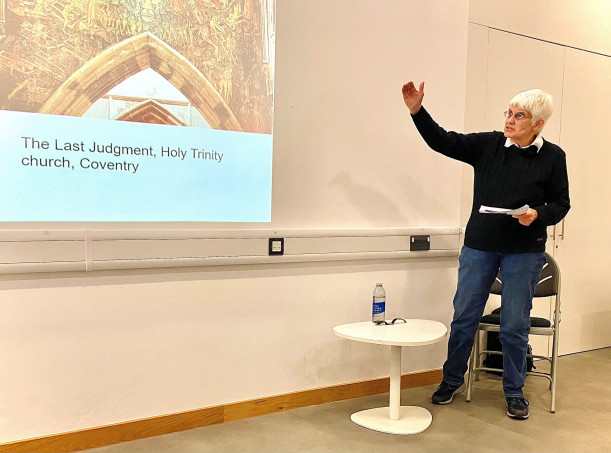
Starting with the town courts, that like the election of the civic officers took place in the (or in one of the) town’s parish churches, thereby deploying the idea of the dispensing of earthly justice as mirroring the idea of celestial justice – see wall paintings of the Last Judgment, which often adorned the space above the chancel arch. Moreover, at St Peter’s church in Sandwich (and perhaps also at Dover and elsewhere), the figures on the funeral monuments in the north aisle are those of leading citizens who oversaw the dispensing of justice in life, and who in death continued this oversight of their successors on the judicial bench. This is not as far fetched as you might think because if you follow the sightlines of these figures, you will see that they were looking at the exact point where the chalice would have been when it was raised by the priest at the moment of transubstantiation.
Nor was the use of churches as courts solely confined to the individual ports. For the Court of Brodhull, the Ports’ own court was held in St Nicholas’ church at New Romney, and the Lord Warden as overseer of the Confederation, having moved his Court of Shepway firstly from Shepway Cross to the Court of the Castle Gate at Dover, was persuaded to move it again to St James’ church in Dover. This took it within the liberty of Dover, and thus within the Cinque Ports collectively, albeit that created a sense of ambiguity for the sacred space of ‘their’ (Dover’s) church had to a degree become a royal judicial space where the Lord Warden sat in judgment.
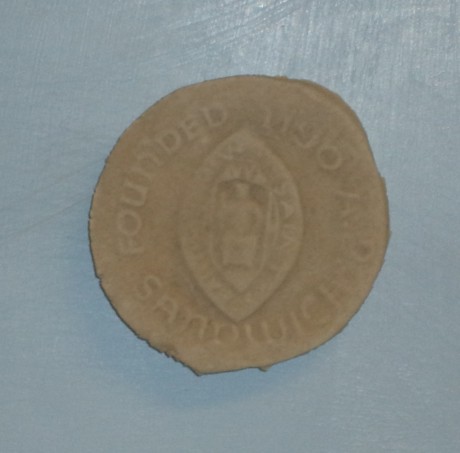
This took us to the final section on the two civic pilgrimages: the great candle of Dover that once every three years journeyed from one of the town’s saints to the other – St Martin at the church dedicated to him next to Dover’s marketplace to St Thomas of Canterbury at his shrine in Canterbury Cathedral. This civic pilgrimage took place on the eve of the feast day of the Translation, and presumably also involved Canterbury’s Marching Watch which met the Dover candle when it arrived at the city, thereby actually and symbolically bringing together the civic officers of Dover and Canterbury, as well as people from both communities as witnesses. The final stage into the cathedral and to the shrine would have brought in the monks such as the shrine keepers, who took custody of Dover’s votive offering.
The second civic pilgrimage was at Sandwich, a commemoration of the defeat of the French at the Battle of Sandwich in 1217 which was said to have resulted in the construction of St Bartholomew’s hospital on the edge of the town, Sandwich’s saintly saviour. This means the pilgrimage was confined within the bounds of the liberty – commencing from the central church of St Peter’s church. Nevertheless, the elements of start, journey/pilgrimage, conclusion are equally fascinating and offer ideas about (civic) good governance – as enacted and seen to be enacted in medieval society. Such ideas sparked a series of questions and apologies, Mark, because we overran the ‘lunch hour’. However, great to know it got people thinking, as revealed by the audience feedback, here are a few examples: “An informative and interesting talk. Makes me want to explore further information. A lot of data to absorb.” Also, “Raised a new awareness of ancient traditions contributing to today’s democracy” and “It made me feel that I needed to know more about the Cinque Ports as what I learned here was new to me.”
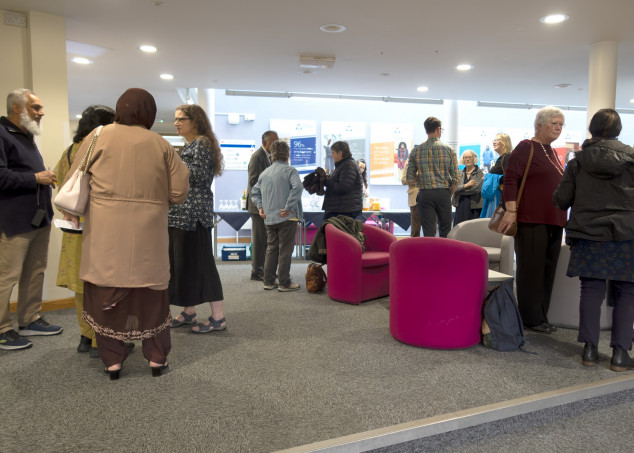
Now to the Becket Lecture on Tuesday evening, which followed a wine reception, and was given by Professor Elisabeth van Houts, Fellow and Hon. Professor of Medieval European History at Emmanuel College, Cambridge. Professor van Houts is working on a new study of the Empress Matilda and for the Becket Lecture she concentrated on Matilda’s engagement with a large number of English archbishops, and those from continental Europe, from her time as a young child sent to Germany to be betrothed to the Emperor Henry V in 1110 until 1166, the year before her death when she was still acting as arbitrator between her son Henry II of England and his estranged archbishop, Thomas Becket. During this over 50 years, although she was very much part of a patriarchal society, nevertheless, she seemingly was not a helpless pawn in the hands of her father and her two husbands, as well as of these numerous senior churchmen, but was able to steer a way that at times meant she had considerable agency, and not solely during the civil war period against her cousin Stephen.
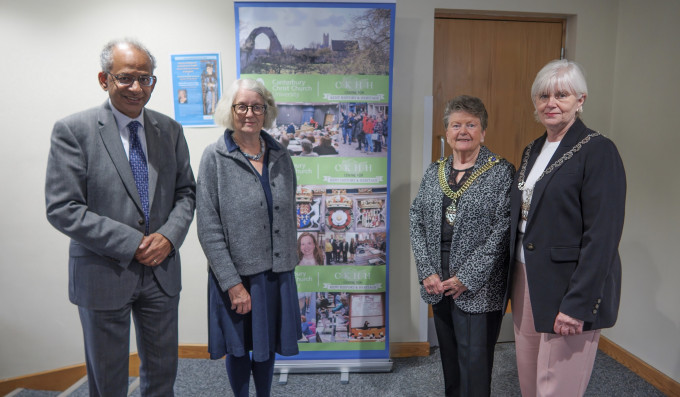
During her time as a girl and young woman in Germany, which was Professor van Houts first section, as the Emperor Henry V’s crowned bride she was caught up in what historians call the Investiture Crisis, that was similar to the later problems between Henry II and Becket because at its heart was a conflict for supremacy between Church and state. Even though it was primarily her husband who was involved in this fierce debate, as an example of Matilda’s role, the couple entertained Ralph d’Escures archbishop of Canterbury for a week while they were encamped near Rome in March 1117. Moreover, one of the archiepiscopal clerks present there was William of Corbeil, who would later become archbishop of Canterbury, and such personal connections were an important part of national and international political relations. Another archbishop Matilda was involved with that same year was Mauritius archbishop of Braga, whose support, although useful, further complicated the tanged relations between emperor and the papacy. Consequently, even though a compromise (imperial climbdown?) was reached in September 1122, when assessing Matilda and archbishops, perhaps for her, her husband’s letter of recommendation in favour of William of Corbeil to become archbishop of Canterbury may imply her involvement.
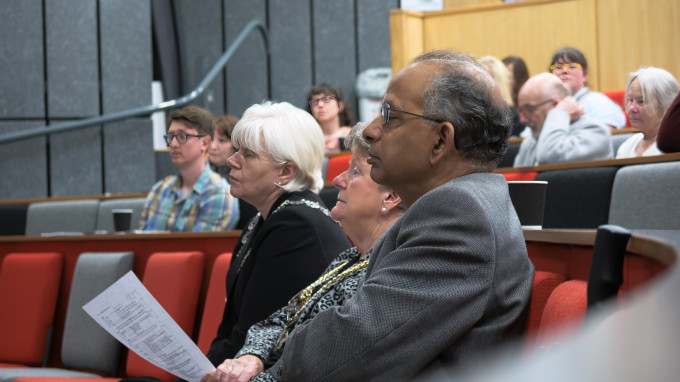
Yet two years later all was to change with the death in May 1125 of Emperor Henry V, albeit as his widow she was in charge of his funeral and before his death he had entrusted her with the imperial treasure. As the couple had no children, the imperial crown passed to another and this change of dynasty was overseen by yet another archbishop, Adalbert of Mainz, to whom she entrusted the regalia, thereby losing much of her authority in the empire, and, as a young widow, she returned to her father’s court in England. However, she did get Adalbert’s agreement to hold part of the imperial treasure, including certain relics, which meant she was seen as extremely rich.
This brought us to Professor van Houts’ second section and Matilda’s time in Normandy and England back with her father, King Henry I and his second wife. She was now her father’s sole heir, her younger brother William having died in the White Ship disaster in 1120, and therefore it was imperative that she marry again to have male children to secure the dynasty. To try to secure this succession, Henry also sought to bind his secular and spiritual lords to Matilda’s cause, William of Corbeil being the first to swear to uphold her right on 1 January 1127. This left the question of her marriage and even though Geoffrey of Anjou was far inferior to her first husband, Matilda married Geoffrey in 1128.
Yet things did not go well and she was soon back at her father’s court, which brings us to another archbishop. Hildebert of Labardin archbishop of Tours whose jurisdiction included Anjou wrote to her and made it clear that it was her duty to return to her husband. Initially she ignored him but finally agreed and she and Geoffrey developed their relationship and they had three sons in quick succession, albeit Henry I died between the birth of her second and third son. This change of fortunes also led to Matilda being let down by Archbishop William of Corbeil who although initially reluctant, gave way and crowned Stephen, Matilda’s cousin, as king of England in December 1135.
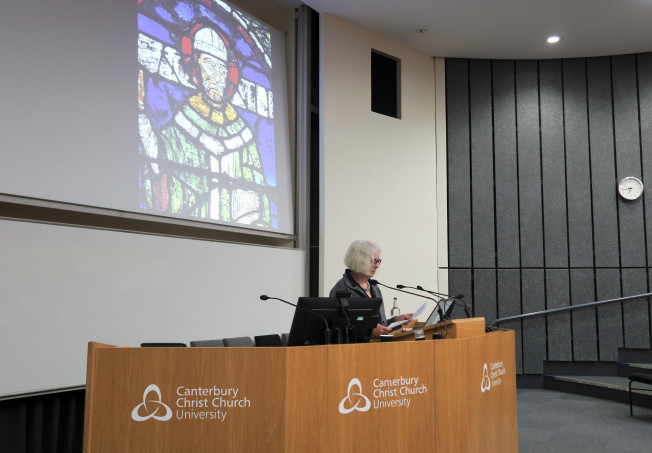
Thus, as Professor van Houts noted, Matilda’s experiences with archbishops had frequently not been easy and this was not to change during the dynastic conflict between Stephen and Matilda, her third section. Indeed, while Pope Innocent II might be said to have sat on the fence, the new archbishop of Canterbury, Theobald of Bec, even though sympathetic to her cause and had known her personally from her time at Bec, was more worried about the dangers Stephen posed. Thus, he backed Stephen but interestingly this see-saw between Stephen and Matilda saw reverses to both sides at certain times, while Matilda also gained the support of a prominent church man, Henry of Blois, bishop of Winchester and Stephen’s brother (he had not been given the archbishopric), but who in terms of the Church hierarchy went higher as papal legate.
Moving to her fourth and final section, Professor van Houts, explained how matters were resolved between Matilda and her son Henry on one side and Stephen on the other, his son Eustace having died, and the agreement that on Stephen’s death Henry would become king. As part of this resolution of the ‘Anarchy’, Matilda ‘retired’ to Normandy, remaining there until her death in 1167.
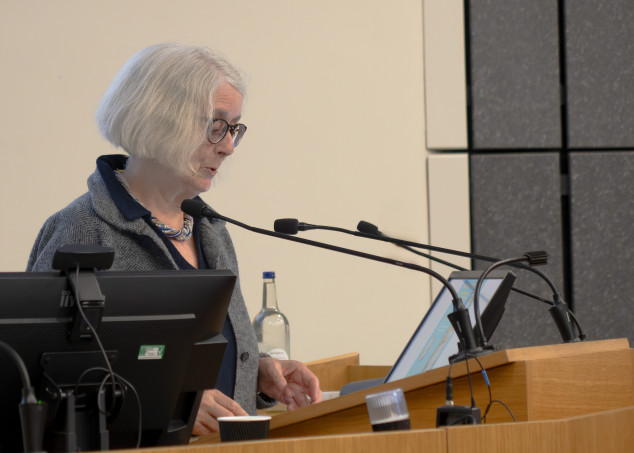
Yet this did not mean she was inactive, and as a royal even imperial personage with decades of experience, Henry II drew on her advice, especially during the early years of his kingship. However, for one extremely important, if not in some ways defining decision, he did not take his mother’s advice for she was against the appointment of Thomas Becket as archbishop of Canterbury. In her view, the position should continue to be held where possible by senior monks from the great Norman religious houses, not by secular clerks. Furthermore, having witnessed first-hand the destructive effects of conflict between Church and state during her first marriage, she was concerned that Henry’s policies, including Becket’s appointment, would lead to another such damaging clash. This she believed was compounded by his insistence at Clarendon of setting the judicial arrangement surrounding ‘criminous clerks’ in writing, rather than trying to resolve the differences between himself as king with his great magnates and the country’s senior churchmen through oral debates.
Consequently, during the early years of Becket’s exile she sought to be an intermediary between the two sides, and even though initially she backed her son, she later changed her views. As Professor van Houts demonstrated, Matilda’s role as mediator between 1163 and 1166 can be traced in Becket’s correspondence, but the empress was not to see the end of this struggle because she died in September 1167 and was buried at Bec, the imperial treasure going to the monastery; and as a concluding point, Professor van Houts wonders if Matilda had lived longer would the events of late December 1170 have taken place as they did!
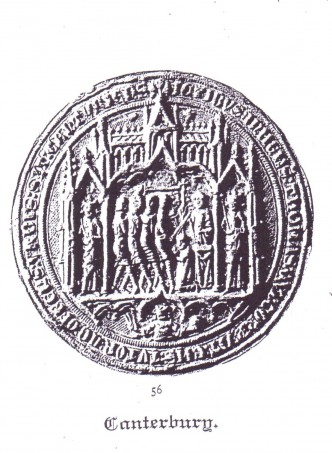
The appreciative audience warmly applauded this excellent lecture and Professor van Houts similarly demonstrated her great command of this topic and period in the subsequent Q and A session. So ended another great Becket Lecture, and it was brilliant that as well as the invited guests of the Lord Mayor and her consort, and the university’s Vice-Chancellor, there were present staff and students from both universities in Canterbury, as well as a considerable number of members of the public from the city and Kent more broadly.
Moreover, for next week, as I said, I’ll be reporting on Dr Catriona Cooper’s CKHH/FCAT Lecture entitled ‘Beyond the visual: digital sensory past’, where Dr Cooper will examine how digital approaches have opened up routes into exploring sensory pasts in new and exciting ways. She will discuss two approaches to opening up our understanding of sensorial experience of the past: auralisation and 3D printing, using case studies from Kent and further afield. The lecture starts at 7pm today (Thursday) in Newton, Ng07 on the CCCU campus, all are welcome, and the lecture is free to students.
 Centre for Kent History and Heritage
Centre for Kent History and Heritage Sheila Sweetinburgh
Sheila Sweetinburgh 1944
1944

